What is osteoarthritis?
Osteoarthritis (OA) also known as degenerative joint disease, involves wear and tear of joints, resulting in cartilage degeneration. This results in pain, progressive deformity and stiffness in the joint.
This can happen as a result of the aging process (majority of cases) or as a result of previous injury. Treatment is mostly conservative, with activity modification to suit the functional status of the joint, occupational therapy, anti-inflammatory medication, splints and injections into the joint. Surgical options aim to reduce pain and restore function to the joint.
Who does it affect?
Studies have shown that more than 80% of adults above the age of 70 years will show xray evidence of osteoarthritis of the hand, while less than 30% of those below 55 years show this. Age is the most significant risk factor. Other risk factors like the female sex and a family history are also significant.
Where does it affect?
In the hand, the more frequently affected joints are the distal finger joints (end joints of the fingers) and the basal joint of the thumb.
Previous injuries involving fractures of the joint surfaces, malunited fractures and ligament injuries resulting in instability of joints accelerates the development of secondary osteoarthritis.
How does it present?
Patients present with pain and stiffness in the hand and wrist. The pain is worse with increased use of the hand and improves with rest. It should not keep the patient awake at night. Early morning sensation of “swelling and fullness” in the joints is typical of osteoarthritis and improves as the day goes on, only to worsen again by the end of the day due to excessive usage.
As the disease progresses, there will be a low level of constant discomfort in the joints and certain specific activities, e.g turning a door knob, , pinching car keys or openning a tight jar will worsen the pain.
Late stages of the disease will see patients develop permanent deformity and constant pain in the hand joints. It will affect their activities of daily living. This is when surgical treatment is requires to improve quality of life.
What are the Differential diagnoses?
These include tendinitis, nerve compressions and trigger fingers affecting the hand. These conditions can co-exist. A detailed history and clinical examination is required for diagnosis.
|
OA Hands Clinical Photo |
X rays of OA Hands |



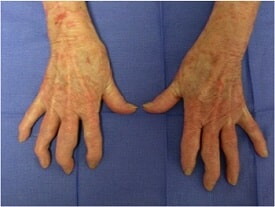
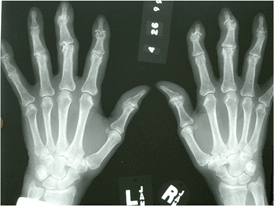
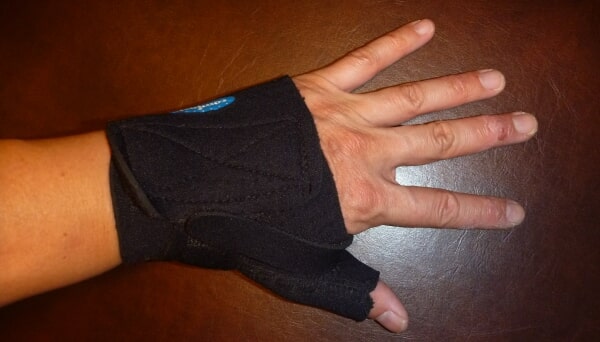
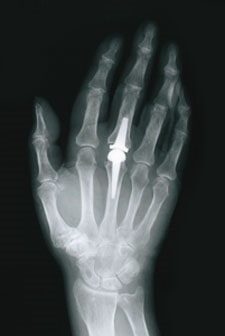
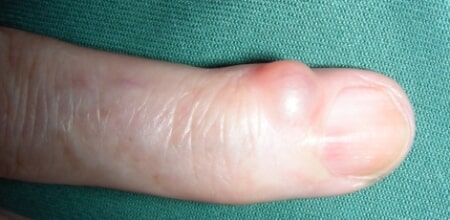 Mucous cyst of the DIPJ causing nail deformity
Mucous cyst of the DIPJ causing nail deformity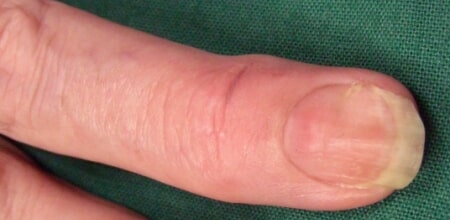 Post excision. Nail deformity will resolve with time after joint debridement and cyst excision
Post excision. Nail deformity will resolve with time after joint debridement and cyst excision